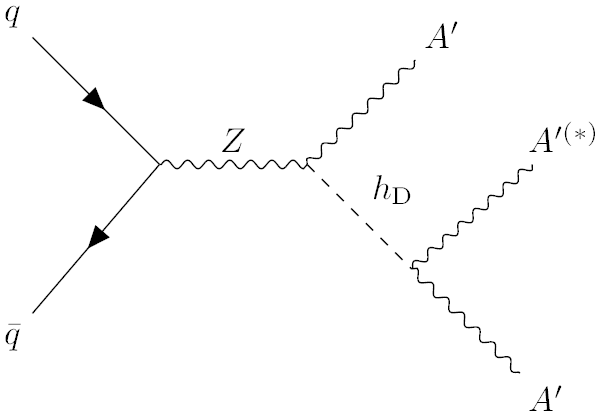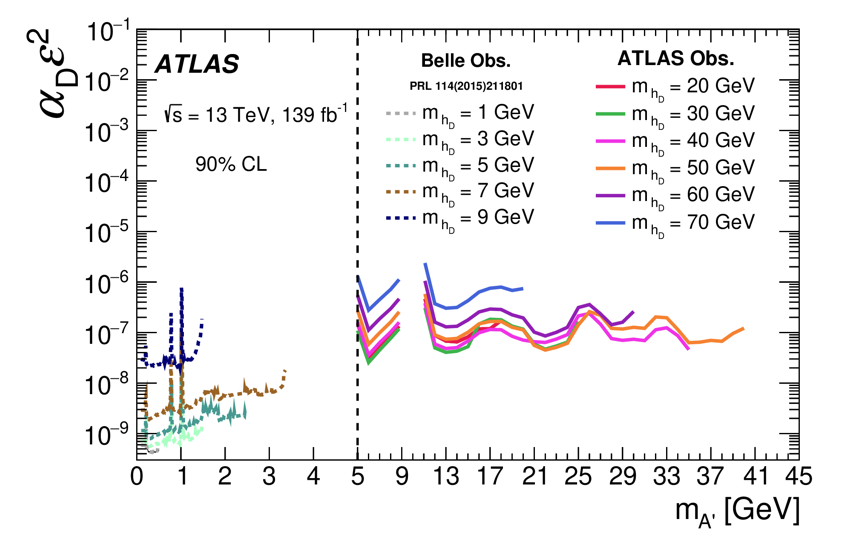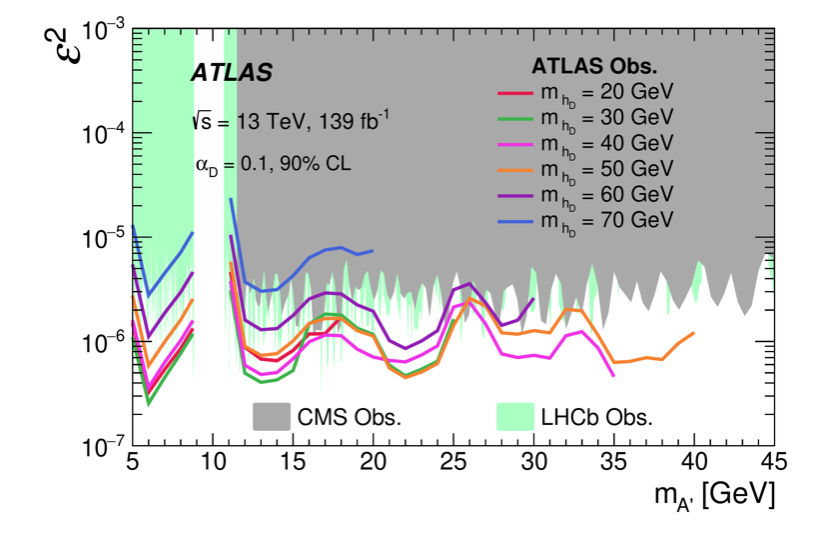The ATLAS experimental team of the Large Hadron Collider (LHC) at the European Organization for Nuclear Research (CERN) recently published a paper on the search for dark photons in Physical Review Letters. This is the first work to use the rare decay of the standard model Z boson in LHC to search for dark photons, which effectively expands the parameter space for exploring dark photons. It has achieved the best sensitivity internationally.
What is a dark photon? As a new type of particle that goes beyond the standard model theory, dark photons, which have electromagnetic interactions similar to photons, are possible candidates for dark matter. But unlike photons, dark photons have mass and their interactions with charged particles are much smaller than photons. Studying the theory and experiments of dark photons can help discover new physics that goes beyond the standard model of particle physics, as well as expand our understanding of the origin and evolution of the universe.
Physicists have been trying various experimental methods to find dark photons (A') in different mass intervals, but until now, no signal have been observed. Researchers from the University of Science and Technology of China (USTC) utilized the dark Higgs-strahlung channel Z→A’ hD in LHC experiments for the first time to search for dark photons. After the rare decay of the standard model Z boson, the dark Higgs particle continued to decay into two dark photons (A',A'A'*), and the dark photons eventually decayed into two fermions. Contrary to most of the previous experiments that can only explore low-mass dark photons (with a mass less than 5GeV), this new process helps to explore high-mass dark photons (above 5GeV). Moreover, it can simultaneously search for dark Higgs particles.

Searching for dark photon A' using the rare decay of the standard model Z boson, where hD is a dark Higgs boson(Image by G. Aad et al.)

90% confidence upper limit of the dark photon joint coupling parameter αDϵ2obtained from ATLAS experiment(Image by G. Aad et al.)

90% confidence upper limit of the mixing parameter e2 of dark photons and photons obtained from ATLAS experiment(Image by G. Aad et al.)
Led by Academician ZHAO Zhengguo, the USTC ATLAS experimental team is a robust and cohesive group that contributes to the ATLAS detector's construction, operation, maintenance, performance research, and trigger optimization. The team independently completed the research and undertook all physical analysis work. They have played a pivotal role in precise tests of the standard model, Higgs particle research, and the direct search for new physics, earning accolades from the ATLAS International Cooperation Group.
This work achieved the most sensitive experimental results internationally in the dark photon mass range of 5GeV-40GeV, and significantly expanded the scope of mass exploration in previous electron-positron collider experiments .
Paper Link: https://doi.org/10.1103/PhysRevLett.131.251801
(Written by XU Jingqi, edited by ZHAO Zheqian, USTC News Center)